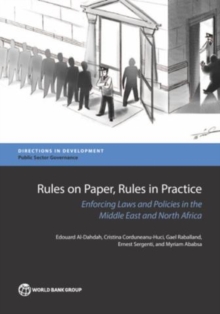
Open and nimble : finding stable growth in small economies Paperback / softback
by Daniel Lederman, World Bank, Justin T. Lesniak
Part of the Directions in development series
Paperback / softback
Description
In the 1960s, economic development was thought to be shaped by unlimited supplies of labour.
Unlimited labour supply implies that wages would remain stagnant even when economies grow.
In the 21st Century, the evidence is clear: the correlation between changes in wages and changes in Gross Domestic Product (GDP) per capita is high and close to one across economies of various sizes.
Economic Development with Limited Supplies of Labor argues that the size of an economy's labour force does condition development.
It studies the challenges of small economies by systematically analysing correlates of labour-force size.The export structures of small economies are concentrated in a few products or services and in a small number of export destinations.
In turn, export concentration is associated with terms of trade volatility, which combined with high exposure to international trade, implies that domestic economies also tend to be volatile as external volatility permeates national economic life.Moreover, limited territory plays a role in shaping how economies are affected by natural disasters, even when the probability of facing such disasters is not necessarily higher among small than among large economies.
The combination of large governments with macroeconomic volatility seems to be associated with low national savings rates in small economies.
This combination could be a challenge for long-term growth if productivity growth and foreign investment do not compensate for low domestic savings.
Information
-
Available to Order - This title is available to order, with delivery expected within 2 weeks
- Format:Paperback / softback
- Pages:129 pages, col. figs, tables
- Publisher:World Bank Publications
- Publication Date:30/11/2017
- Category:
- ISBN:9781464810428
Information
-
Available to Order - This title is available to order, with delivery expected within 2 weeks
- Format:Paperback / softback
- Pages:129 pages, col. figs, tables
- Publisher:World Bank Publications
- Publication Date:30/11/2017
- Category:
- ISBN:9781464810428










